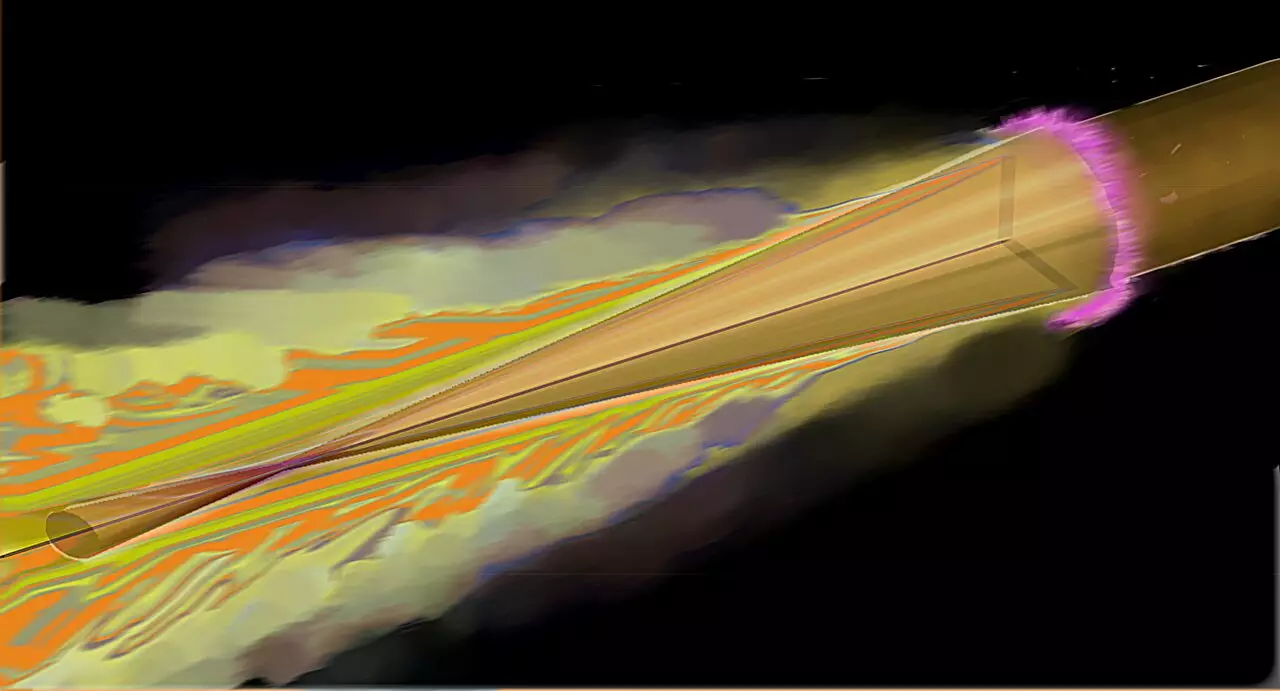The universe’s most extreme environments exist deep within stars and planets, laden with pressures soaring millions of bars and temperatures reaching several million degrees. Replicating such conditions in a laboratory setting has been a monumental challenge, traditionally necessitating the use of formidable lasers like the National Ignition Facility (NIF) in California. However, a groundbreaking study led by a research team at the Helmholtz-Zentrum Dresden-Rossendorf (HZDR) has unveiled innovative techniques utilizing a significantly smaller laser system to simulate these cosmic conditions.
For decades, scientists focused on high-energy laser facilities to explore states of matter mirroring those found in celestial bodies. The 2023 findings from HZDR research indicate that even compact lasers can reach astonishing levels of pressure and temperature, defying the notion that only the mightiest machines can achieve such extremes. The critical advancement in this study involves a copper wire, narrower than a human hair, which serves as the focal point for the laser’s intense energy.
In previous methodologies, a thin film of material was targeted with immense bursts of laser energy, resulting in a rapid increase in temperature that unleashed shock waves throughout the material. The HZDR team explored this concept further, pushing the boundaries of what could be observed during these swift and fleeting interactions. In this study, ultra-strong X-ray flashes emitted from the European XFEL (X-ray Free Electron Laser) played an instrumental role in providing real-time monitoring of the resulting phenomena within the wire.
The Dance of Shock Waves
The research involved a sequence of controlled experiments where scientists meticulously timed the intervals between laser impacts and X-ray emissions. This strategic coordination allowed them to compile a detailed ‘X-ray film,’ capturing the dynamic processes occurring within the copper wire. As Dr. Alejandro Laso Garcia, the lead author of the study, explains, the interaction commences with a laser pulse striking the copper wire, disseminating shock waves akin to a detonation traversing through the material.
As the primary shock wave progresses, high-energy electrons generated by the laser impact race along the wire’s surface. This rapid movement catalyzes secondary shock waves, further intensifying conditions as they converge towards the wire’s center. The collaboration of these waves results in extraordinary temperatures and pressures, momentarily elevating the copper’s density to eight to nine times its usual state.
The implications of reaching such extreme states are monumental. The HZDR team’s measurements indicated that pressures peaked at around 800 megabars and temperatures soared to an incredible 100,000 degrees Celsius—conditions reminiscent of a white dwarf star’s corona. The possibility of scaling this technology to simulate the interiors of gas giants like Jupiter or numerous exoplanets opens new avenues in both astrophysics and planetary science.
Beyond its cosmic allure, this novel method promises substantial advancements in fusion research. Ulf Zastrau, leading the High Energy Density group at European XFEL, emphasized the innovative capacity to attain elevated densities and temperatures across various materials. This could, in turn, bolster fusion endeavors that aim to harness energy through high-performance laser processes.
The Future of Energy and Research
As scientists around the globe continue to innovate on fusion energy concepts, the research from HZDR and the European XFEL signifies a pivotal stride towards achieving sustainable energy through fusion. By unleashing potent laser flashes upon fuel capsules of frozen hydrogen, the objective is to ignite a reaction that yields more energy than consumed. Dr. Cowan has articulated the importance of these findings for future experiments, allowing researchers to observe internal processes in real-time during laser interactions.
The research spearheaded by HZDR represents a monumental leap in replicating the extreme conditions seen within stars and gaseous planets. Instead of relying solely on large-scale operations, scientists have discovered that compact laser technology can deliver profound insights into the physics of matter under duress. As innovative approaches continue to emerge, the collaborative efforts of this research team might ultimately redefine our understanding of both the cosmos and the possibilities of sustainable energy sources. The fusion of astrophysics with cutting-edge technology sets the stage for a future where the universe’s secrets may be revealed—and harnessed—like never before.


Leave a Reply